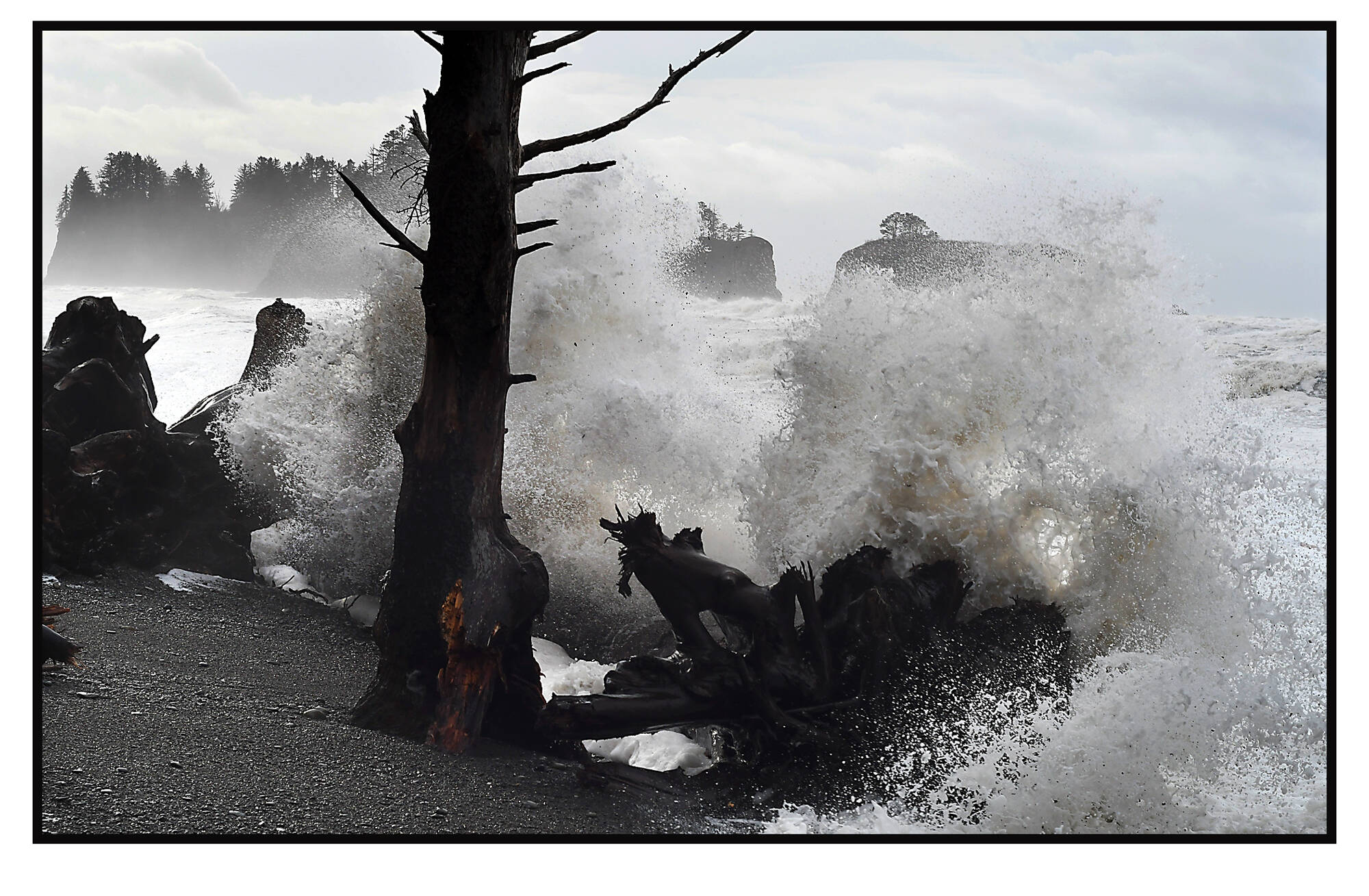A newly completed project lays the foundation for a team to help Washington’s coastal communities be better prepared for floods, erosion and other coastal hazards
Floods. Erosion. Sea level rise. Tsunamis. All of these hazards threaten Washington State’s coasts — with potentially dire consequences. Although there have been many efforts and investments to respond to disaster events, geographically isolated communities on the state’s Pacific coast often lack sufficient capacity to undertake comprehensive planning efforts to support longer-term resilience. Meanwhile, these same communities face disproportionate risks and impacts from natural hazards.
The newly completed Resilience Action Demonstration (RAD) Project, a collaboration between the Washington State Department of Ecology and Washington Sea Grant, is a significant step forward in addressing these issues. The two-year NOAA-funded project piloted a multi-organizational coastal hazards resilience team in response to urgent needs voiced by coastal communities and Tribes. The RAD team provided hands-on assistance to scope projects and secure funding for coastal hazards resilience efforts. These projects tackled pressing coastal hazards issues while planning for the future, and allowed the team to identify additional opportunities to support coastal communities’ resilience to hazards. The team compiled their recommendations into a final report, released in March 2022 on the Washington State Department of Ecology website.
Establishing a team made up of staff from multiple state agencies and university extension programs is a novel approach. This strategy was recommended in the 2017 Washington State Coast Resilience Assessment as a way to help address the systemic disadvantages faced by small, rural communities. “These communities don’t have as many resources to do planning work as bigger cities do, but in many cases they are even more vulnerable to coastal hazards,” says Henry Bell, a coastal planner at Ecology and co-author of the report. “Staff are stretched so thin that they’re often only able to respond to hazards issues as they arise. It’s really difficult for them to be as proactive as they want to be, particularly as impacts are becoming more severe. A coordinated agency assistance team has the potential to help local communities overcome some of these big capacity gaps.”
The RAD team conducted outreach, research and collaboration with local, state, federal and Tribal participants to enhance existing resilience initiatives and advance locally-driven projects and plans. “Our small city does not have resources such as these within our staffing capabilities, so the support and outreach provided by the RAD team was invaluable,” one local collaborator said via an anonymous survey that sought feedback on the team’s work.
In the same survey, another local project proponent described the value of the RAD’s collaborative approach: “It makes a big difference having people that really understand what it means working with us folks on the coast. RAD lets us have a share in driving the bus, so to speak, instead of the State coming in and asking us to ride [to] their predetermined destination.”
The team worked with local governments and community organizations to develop and find funding for multiple hazards resilience projects that will soon be getting started. For example, the team worked with Willapa Erosion Control Alliance Now to secure FEMA funds to develop a long-term coordination plan to address chronic beach erosion in North Cove and Tokeland; they worked with the City of Ocean Shores to secure FEMA funds to assess and plan for chronic erosion in Oyhut Bay; and they worked with the Ports of Ilwaco and Chinook to address present and future flooding that impacts their marinas and surrounding communities. This latter collaboration resulted in a National Fish and Wildlife Foundation-funded project to create a community-driven sea level rise resilience strategy for Baker Bay and Grays Bay, led by the Lower Columbia Estuary Partnership and Washington Sea Grant.
The success of this pilot project demonstrates the long-term need for such an initiative. “An inter-agency Coastal Hazards Organizational Resilience Team would work in partnership with staff and community members on the Pacific coast to strengthen their social, economic and ecological resilience by providing strategic coordination and advancing projects that address both near-term priorities and long-term environmental changes,” says Jackson Blalock, community engagement specialist at Washington Sea Grant and co-author on the report.
While the RAD Project was focused on the Washington coast, it has national relevance. Across the country, even when funding opportunities exist, many small communities don’t have the capacity to secure funds for local projects that would improve their resilience to natural hazards. “This is an unprecedented time for federal investment in coastal resilience. This presents an important opportunity to help communities and Tribes leverage federal support to supplement the significant investments they are already making to address existing impacts and prepare for the future,” says Bobbak Talebi, a senior coastal planner at Ecology and co-author of the report.
“The RAD helped demonstrate that by working collaboratively with these communities, we can strengthen partnerships and provide the extra capacity to develop project scopes, connect communities with funding programs, and help move projects off the shelf and onto the shore. By working together, we can accomplish a shared vision for addressing hazards risks while also achieving environmental and socio-economic goals.”
In addition to establishing a permanent Coastal Hazards Organizational Resilience Team, the RAD report includes several other recommendations, including: creating resilience-focused local staff positions; increasing local access to funds; and supporting hazards resilience through planning and policy.
The RAD team is currently working with the Coastal and Marine Advisory Council — a group that advises the Governor, Legislature, and state and local agencies — to advance these recommendations, which provide actionable pathways for tackling these issues and supporting long-term resilience.
“The resilience of Washington’s coastal communities — the very safety, security and survival of our residents — depends on how well prepared we are for the increasing array of coastal hazards that we are facing,” says Russell Callender, director of Washington Sea Grant. “The RAD project is a meaningful step forward in establishing this preparedness.”



